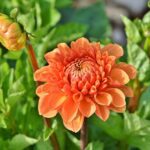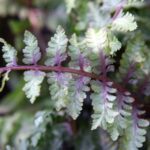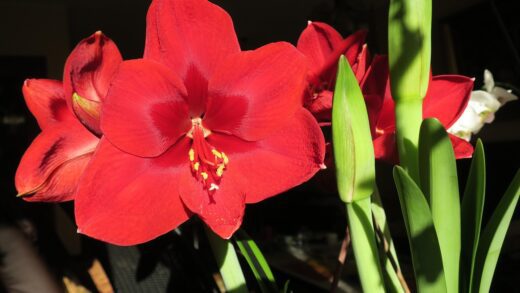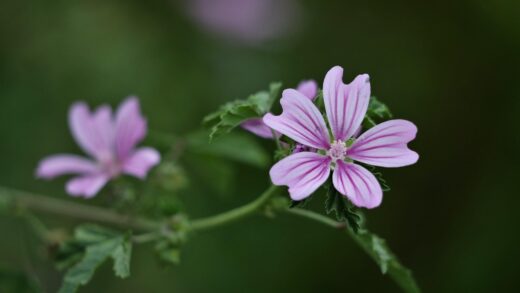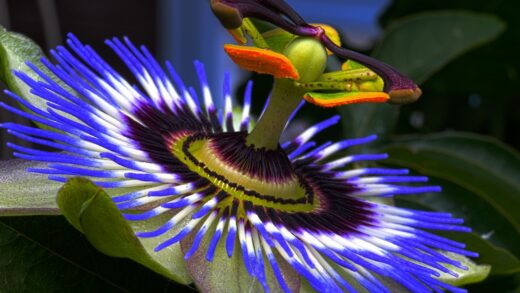Providing the right care for lily of the valley is a rewarding endeavor, resulting in a lush carpet of green and a profusion of fragrant, bell-shaped flowers each spring. This woodland perennial, known for its delicate appearance, is surprisingly resilient and requires relatively low maintenance once established in a suitable environment. The key to success lies in understanding its natural habitat and replicating those conditions as closely as possible in the garden. Proper care ensures not only vigorous annual growth and flowering but also the long-term health of the plant colony, allowing it to spread and thrive for many years.
At its core, caring for lily of the valley involves a holistic approach that begins with its initial placement and extends through the changing seasons. It is not a plant that demands constant intervention, but rather thoughtful preparation and periodic attention to its fundamental needs. This includes ensuring the soil is rich and well-draining, providing adequate moisture without creating waterlogged conditions, and protecting it from the harshest elements. By mastering these basics, any gardener can cultivate a beautiful and enduring stand of this classic spring bloomer, transforming a shady corner into a fragrant oasis.
The plant’s life cycle is a critical factor to consider in its ongoing care. Its active growth period is primarily in the spring, when it sends up its iconic shoots, unfurls its leaves, and produces its delicate flower stalks. During this time, its needs for water and nutrients are at their peak. After flowering, the plant focuses its energy on its root system, specifically the rhizomes, storing resources for the following year’s display. Understanding this annual rhythm allows for a more intuitive and effective care routine.
It is also vital to remember that all parts of the lily of the valley plant are highly toxic if ingested, a fact that influences its placement and handling. While its beauty is undeniable, care should be taken in gardens frequented by curious pets or young children. This consideration is an integral part of responsible cultivation, ensuring that the plant brings joy without posing a risk. Proper handling, such as wearing gloves when dividing clumps, is also a sensible precaution.
Understanding the ideal environment
The foundation of successful lily of the valley cultivation is providing an environment that mimics its native woodland floor habitat. This plant thrives in locations that offer partial to full shade, shielded from the intense and direct afternoon sun. An ideal spot would be beneath deciduous trees, where it can receive dappled sunlight in the spring before the canopy fully leafs out, followed by cooling shade during the heat of summer. Such a location protects the foliage from scorching and helps the soil retain necessary moisture.
More articles on this topic
Soil composition is arguably the most critical environmental factor for this plant. Lily of the valley demands soil that is consistently moist but also well-draining to prevent the rhizomes from rotting. It performs best in soils rich in organic matter, such as compost or well-rotted leaf mould, which help retain moisture while providing essential nutrients. A slightly acidic to neutral soil pH, typically between 6.0 and 7.0, is preferred, though the plant can be quite adaptable in this regard.
Proper spacing and air circulation are also important considerations for the long-term health of a lily of the valley patch. While it is a spreading groundcover that naturally forms dense colonies, overcrowding can lead to competition for resources and an increased risk of fungal diseases. When initially planting, spacing the individual pips or rhizome divisions appropriately gives them room to establish and expand. Over time, thinning a mature patch may become necessary to maintain its vigor.
Finally, consider the plant’s companions in the garden bed. Lily of the valley pairs beautifully with other shade-loving perennials like hostas, ferns, and astilbes, creating a multi-layered and textured woodland garden scene. Choosing companion plants with similar light, soil, and moisture requirements simplifies care and ensures that all plants in the arrangement can thrive together. This thoughtful combination creates a cohesive and sustainable garden ecosystem.
Seasonal care throughout the year
Spring is the season of most active growth for lily of the valley and when it requires the most attention. As the new shoots, known as pips, emerge from the soil, it is crucial to ensure the ground is consistently moist to support the rapid development of leaves and flower stalks. This is also the ideal time to apply a balanced, slow-release fertilizer or a top dressing of rich compost to provide the necessary nutrients for a spectacular floral display. Monitoring for early signs of pests or diseases is also a key springtime task.
More articles on this topic
As the season transitions into summer, the focus of care shifts from promoting blooms to maintaining the health of the foliage. The leaves are vital for photosynthesis, which is the process of creating and storing energy in the rhizomes for the next year’s growth. It is essential to continue watering the plants during any dry spells, as drought stress can cause the foliage to yellow and die back prematurely. The shade provided by the overhead canopy of trees during summer is critical to protect the leaves from sun scorch.
Autumn marks the beginning of the plant’s dormancy period. The leaves will naturally begin to yellow and wither as the plant redirects its energy below ground. This is the time to allow the foliage to die back naturally without cutting it prematurely. Once the leaves have fully browned, they can be gently raked away or left in place to decompose and enrich the soil. Autumn is also the perfect time to divide and transplant overgrown clumps to manage their spread and propagate new plants.
Winter care for lily of the valley is generally minimal, as the plant is fully dormant and very cold-hardy. In most climates, established plants require no special protection to survive the winter months. However, in regions with particularly harsh winters or where the ground is subject to repeated freezing and thawing, applying a layer of mulch after the ground has frozen can provide beneficial insulation. This layer of shredded leaves or bark chips helps to protect the rhizomes from extreme temperature fluctuations.
Water and moisture management
Proper watering is fundamental to maintaining a thriving colony of lily of the valley, as the plant has a distinct preference for consistently moist soil. The goal is to keep the soil damp to the touch, similar to a wrung-out sponge, but never saturated or waterlogged. The frequency of watering will depend heavily on factors such as soil type, climate, and the amount of natural rainfall. In periods without rain, a deep watering once or twice a week is typically sufficient to meet its needs.
The best method for watering is to apply it directly to the soil at the base of the plants, avoiding the foliage as much as possible. Using a soaker hose or a gentle drip irrigation system is ideal, as this delivers moisture directly to the root zone where it is needed most. Wetting the leaves, especially in humid conditions or late in the day, can create an environment conducive to the development of fungal diseases like leaf spot. Morning is the best time to water, allowing any moisture on the leaves to dry quickly in the sun.
Observing the plants is the most reliable way to gauge their need for water. The leaves of an underwatered lily of the valley may begin to droop or their edges may start to turn brown and crispy. Conversely, yellowing leaves and a general lack of vigor can be signs of overwatering and potential root rot. It is important to check the soil moisture with your finger before watering; if the top inch or two of soil is still damp, it is best to wait.
Incorporating organic matter into the soil is a highly effective strategy for moisture management. A generous amount of compost or leaf mould mixed into the garden bed before planting will significantly improve the soil’s ability to retain water, reducing the need for frequent irrigation. Additionally, applying a layer of organic mulch, such as shredded bark or wood chips, on top of the soil helps to conserve moisture by reducing evaporation and also suppresses weed growth. This creates a more stable and favorable root environment.
Nutrient and feeding strategies
Lily of the valley is not a particularly heavy feeder, but it performs best in soil that is rich in organic nutrients. The most effective way to provide these nutrients is to amend the soil with plenty of well-rotted compost or aged manure before planting. This initial soil preparation creates a nutrient-rich foundation that will support the plants for several seasons. This approach mimics the naturally fertile conditions of a forest floor, where a constant supply of decomposing leaves nourishes the soil.
Annual feeding in the early spring can help to encourage more robust growth and a profusion of flowers. A top dressing of compost or a light application of a balanced, slow-release granular fertilizer is ideal. Apply the fertilizer just as the new pips are beginning to emerge from the ground, gently working it into the soil surface and watering it in well. Avoid using high-nitrogen fertilizers, as these can promote excessive leaf growth at the expense of the delicate and fragrant blooms.
Throughout the growing season, it is more beneficial to focus on the health of the soil rather than direct, frequent fertilization. Healthy soil microbiology will make nutrients more readily available to the plant’s root system. You can support this by adding a fresh layer of organic mulch each year. As the mulch breaks down, it slowly releases nutrients into the soil, provides food for beneficial microorganisms, and improves overall soil structure.
It is important to recognize the signs of potential nutrient deficiencies, although they are uncommon in well-prepared soil. If the leaves appear pale green or yellow and growth seems stunted, it could indicate a lack of essential nutrients. In such cases, a soil test can provide valuable information about which specific nutrients are lacking. Based on the results, you can then apply a targeted fertilizer to address the deficiency without over-fertilizing.
Post-flowering and foliage care
After the fragrant blooms of lily of the valley have faded in late spring, the focus of care shifts entirely to the foliage. It is critically important to leave the green leaves in place for as long as they remain healthy. These leaves are the plant’s engine for photosynthesis, capturing solar energy and converting it into food, which is then stored in the underground rhizomes for the next year’s growth and flowering cycle. Removing the foliage prematurely will significantly weaken the plant and lead to a diminished display in the following spring.
While the flower stalks can be trimmed back to the base after the blooms have faded for a tidier appearance, the leaves should be allowed to continue growing throughout the summer. During this period, continue to provide adequate water, especially during dry spells, to keep the foliage lush and green. Healthy, vibrant leaves are a sign that the plant is effectively building up the energy reserves it needs to survive dormancy and thrive next year.
Towards the end of summer or in early autumn, you will notice the leaves naturally beginning to yellow and wither. This is a normal part of the plant’s life cycle as it prepares for winter dormancy. Do not be tempted to cut the leaves back at the first sign of yellowing. It is best to wait until they have completely browned and collapsed, which indicates that the process of nutrient transfer back to the rhizomes is complete.
Once the foliage has fully died back, it can be cleaned up and removed from the garden bed to improve sanitation and reduce the chances of overwintering fungal spores or pest eggs. Gently rake away the dead leaves and add them to your compost pile. Alternatively, in a more naturalized woodland setting, the leaves can be left in place to decompose over winter, contributing to the organic matter in the soil and providing a light, natural mulch for the rhizomes below.












